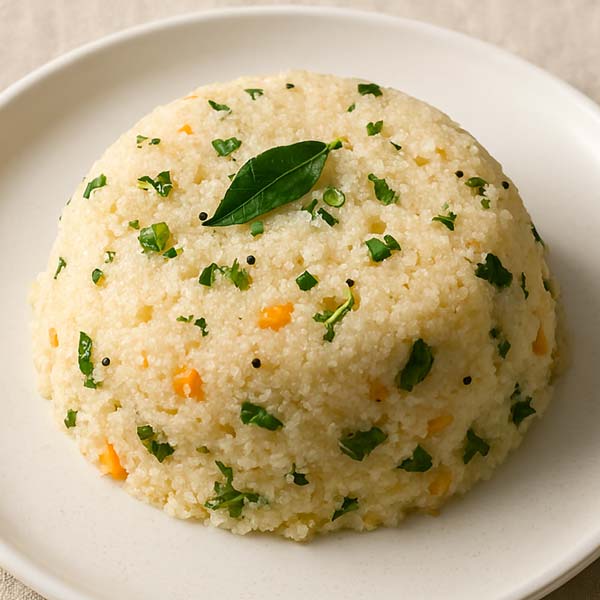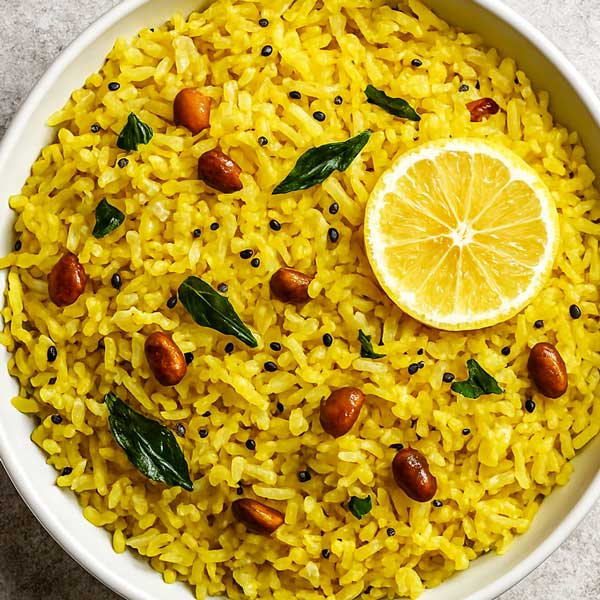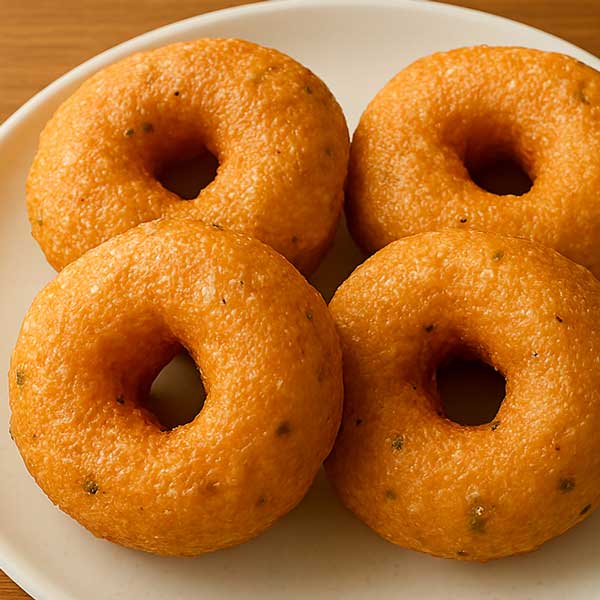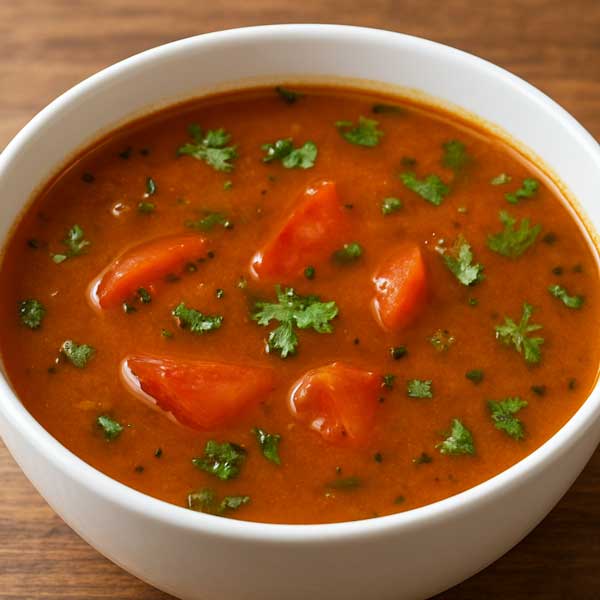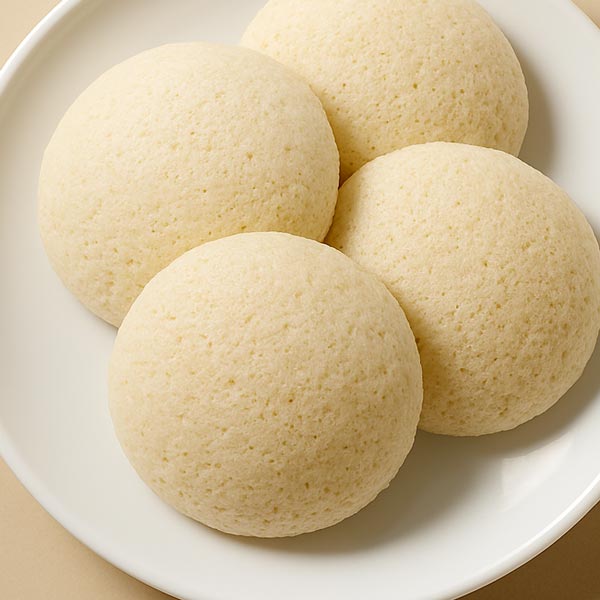Dosa Recipe
Dosa is a popular South Indian dish made from a fermented batter of rice and lentils. With the right batter and a hot pan, making dosa at home is easier than you think.
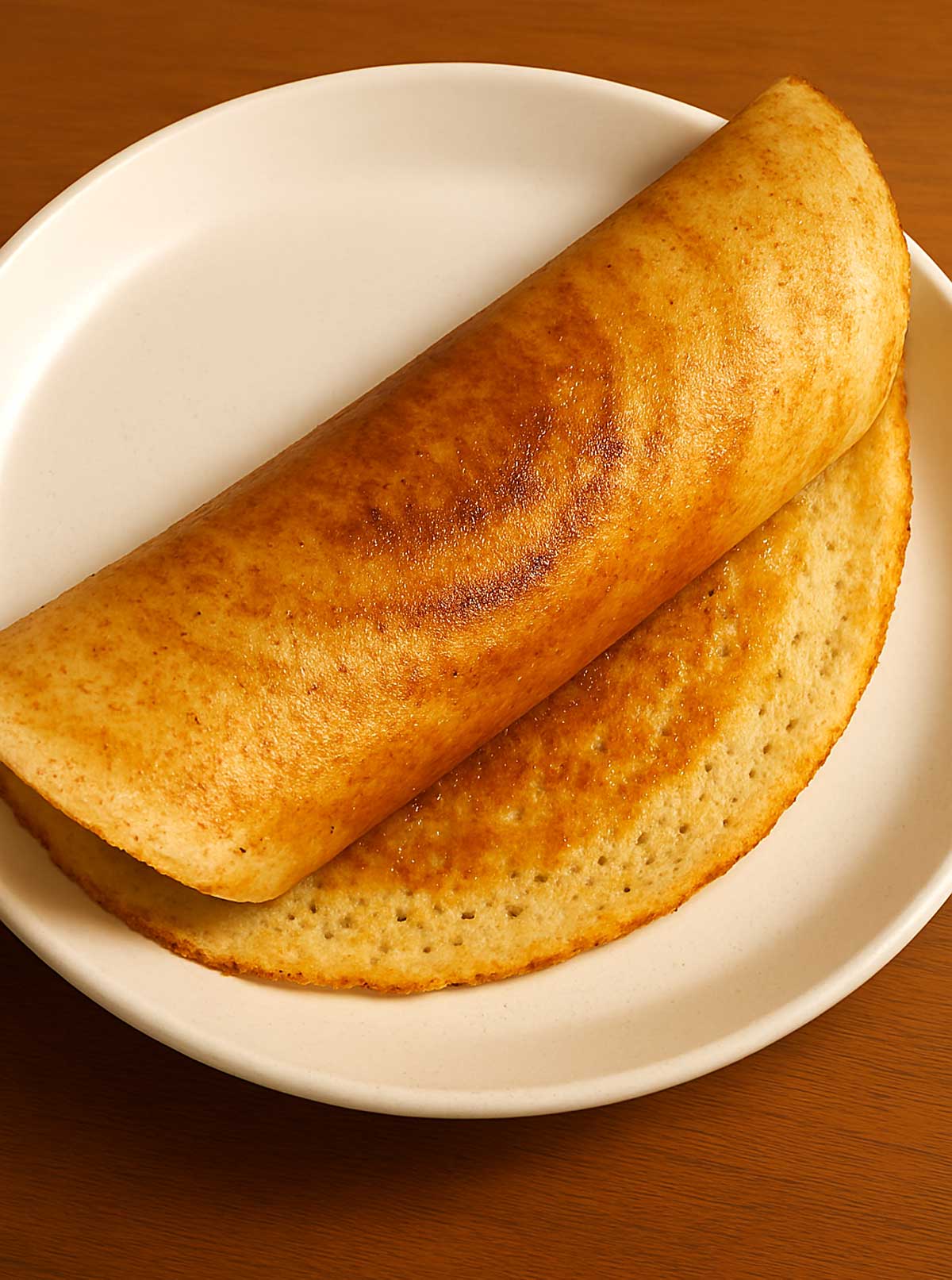
Dosa is crispy, golden-brown South Indian crepe often served with coconut chutney and sambar. It is a healthy vegetarian dish and an easy-to-cook rice-based meal that is perfect for quick breakfast, lunch, or dinner. You can prepare dosa using a cast iron tawa or a non-stick pan for a perfectly crisp texture. Follow these step-by-step instructions for making dosa batter and cooking this traditional Indian dish with simple ingredients.
Ingredients with Substitutes
- Rice (regular or parboiled): The primary ingredient for dosa batter, providing a smooth base. You can substitute with idli rice or ponni rice to achieve softer, fluffy dosas.
- Urad dal (black gram lentils): Essential for creating a light, airy texture and natural fermentation in dosas. Moong dal can be used as an alternative, though the texture will differ slightly.
- Poha (flattened rice, optional for softness) – Helps in fermentation and adds a soft, tender consistency. Beaten rice or thin variety poha can be used as a substitute.
- Toor dal (optional, added while soaking urad dal): Enhances flavor and adds nutrition. Moong dal is a suitable alternative.
- Chana dal (optional, added while soaking urad dal): Provides subtle flavor and improves the batter’s texture. Masoor dal can also be used instead.
- Fenugreek seeds: Promotes fermentation and adds a mild aroma. A small pinch of mustard seeds can be used if fenugreek is unavailable.
- Salt: Enhances taste and balances flavors in the dosa batter. Sea salt, rock salt, or regular table salt can be used.
- Water (for soaking, grinding, and adjusting batter consistency): Vital for smooth, pourable batter and fermentation. Filtered or regular tap water works well.
- Oil or ghee (for greasing the pan): Ensures dosas cook evenly and develop a crispy golden texture. Neutral oils like sunflower or vegetable oil can be used as alternatives.
- Iron cast tawa: Traditional pan for making authentic, crisp dosas. Non-stick or stainless steel tawa can be used but may yield slightly different texture.
How to Make Dosa on Cast Iron Tawa
1. Wash and soak the urad dal for 4–6 hours. Drain and transfer it to a blender or wet grinder. Add water little by little and grind until you get a smooth, fluffy batter.
2. Drain the soaked rice and fenugreek seeds. Grind them with water into a slightly coarse batter, smooth enough to spread on a pan but with a light grainy texture for authentic crispy dosas. If using poha, add it while grinding for better softness and texture.
3. Combine both batters in a large bowl. Mix thoroughly with a clean hand or spatula to incorporate air, which helps with fermentation.
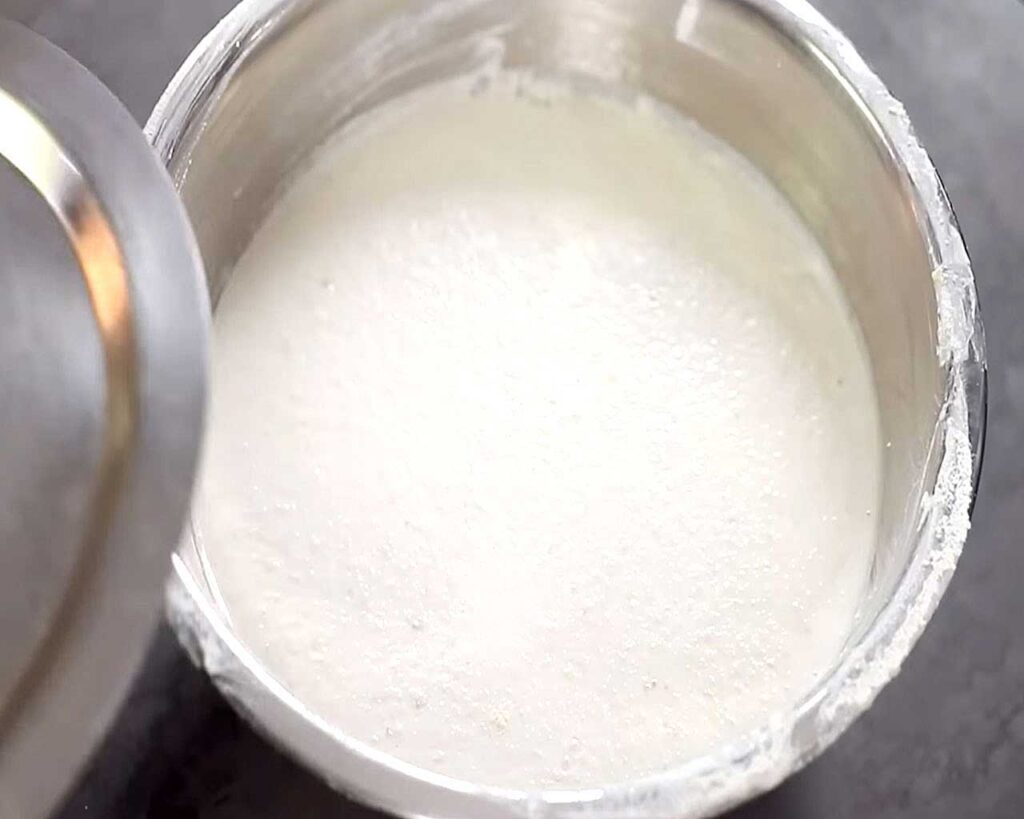
4. Transfer the mixed batter to a clean steel or glass bowl. Cover and let it ferment in a warm place for 8–12 hours or overnight until the batter rises and turns airy. Stir it gently before using.
5. Heat a non-stick or cast-iron dosa tawa (griddle) on medium heat for 1–2 minutes. Sprinkle some water to check if it’s hot. Wipe off with a cloth or onion slice.
6. Pour a ladleful of fermented batter in the center of the hot tawa. Spread it in a circular motion to form a thin dosa. Cook on medium heat for 1–2 minutes until the edges lift slightly and the bottom turns golden brown. Drizzle a few drops of oil or ghee around the edges.
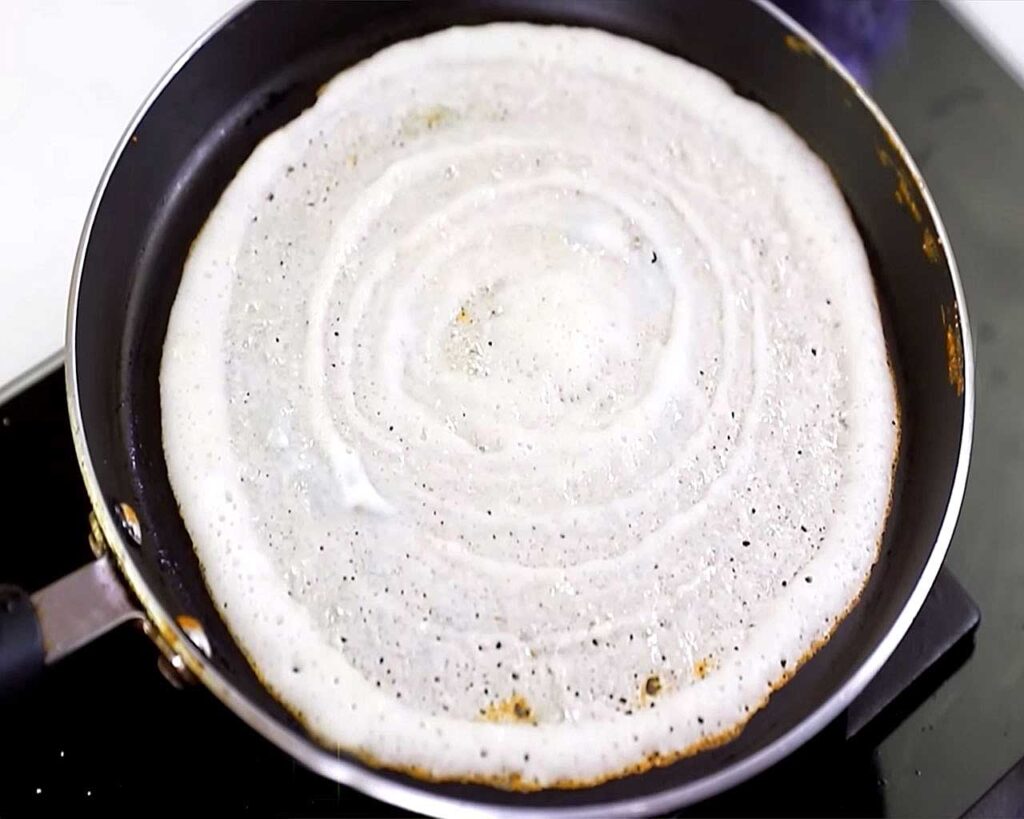
7. Once cooked, gently remove the dosa from the tawa and place it on a plate. Serve hot with coconut chutney, sambar, or potato masala filling.

Serving Suggestions for Dosa
Dosa can be enjoyed in many delicious ways. The classic dosa is traditionally served with coconut chutney, tangy rasam, and sambar, making it a wholesome South Indian meal. For something more filling, masala dosa is prepared by adding a spiced potato filling inside before folding, giving it a hearty and flavorful twist that pairs perfectly with chutney and sambar.
If you’re looking for creative variations, cheese dosa is a fusion favorite where grated cheese is sprinkled while cooking, melting into the crispy dosa for a gooey delight. Another popular option is rava dosa, made with semolina instead of rice, which turns out thin, lacy, and extra crispy. These variations not only bring versatility but also highlight the charm of this beloved South Indian dish.
Tips for Making Perfect Dosa
Drain the soaked rice and fenugreek seeds. Grind them with water into a slightly coarse batter, smooth enough to spread on a pan but with a light grainy texture for crisp dosas. If using poha, add it while grinding for better texture. Combine both batters in a large bowl and mix well. A light, airy batter is crucial for making soft yet crisp dosas.
Let the batter ferment overnight for best results. During fermentation, it will rise, turn airy, and develop a light sour aroma for achieving the classic dosa taste and texture. The batter should double in volume and become slightly frothy. Always cover the bowl with a clean cloth and place it in a warm spot in your kitchen to ensure proper fermentation. Mix the urad dal and rice batters thoroughly using clean hands or a ladle for even fermentation.
After fermentation, the dosa batter will appear risen with tiny air bubbles on the surface, have a light and fluffy texture, and give off a mildly sour aroma, signs that it’s perfectly ready for making delicious dosas. Before pouring the batter, sprinkle a few drops of water onto the hot tawa and let it sizzle, or wipe it with a paper towel to clean. This ensures the surface is properly heated for cooking crispy dosas.
Using the back of a ladle, spread the batter in a circular motion, moving outward to form a thin, even round shape. Drizzle a few drops of oil or ghee around the edges for extra crispness. For a classic crisp dosa, do not flip it. If you prefer a softer dosa, gently flip it using a spatula and cook for another 30 seconds.
Frequently asked questions
Cast iron retains heat better and lasts longer and gives crispier, golden-brown dosas and improves with use.
You can use raw rice or parboiled rice for making crispy dosa. Avoid basmati rice or short-grain rice.
Dosa batter might be too thick or not fermented enough to give crispy texture. For crisp dosa, always use a well-fermented batter, a medium-hot tawa, and spread a layer of batter in a circular motion.
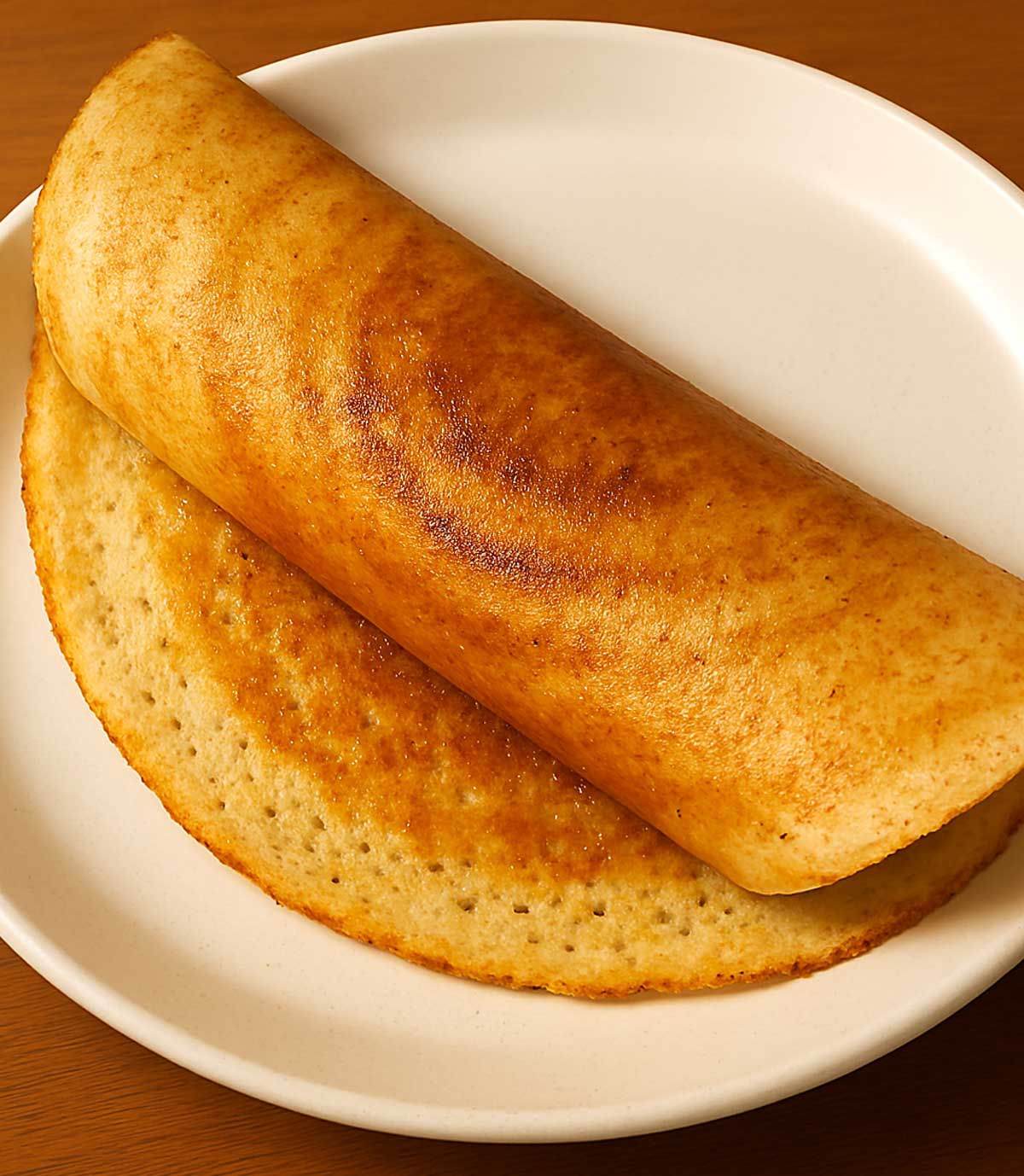
Recipe Card
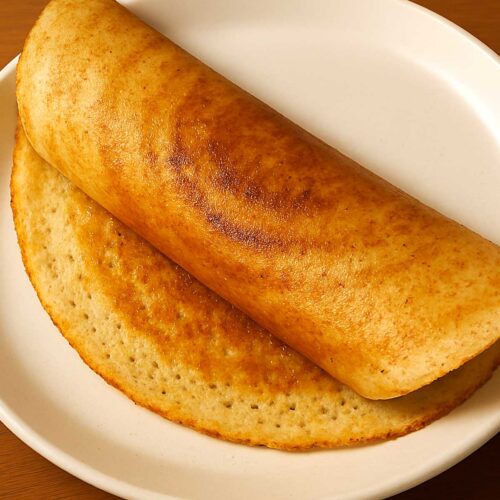
Crispy South Indian Dosa
Equipment
- 1 Large mixing bowls for soaking and fermenting the batter
- 1 Blender for grinding rice and urad dal
- 1 Ladle for pouring and spreading the dosa batter
- 1 Cast Iron or Non-stick Tawa (Griddle) for cooking the dosa
- 1 Flat Spatula for lifting and flipping the dosa (optional)
- 1 Damp cloth or tissue for wiping the tawa between dosas
- 2 Measuring cups
- 1 Lid or cloth to cover the batter during fermentation
Ingredients
- 2 cups rice regular or parboiled
- ½ cup black gram lentils
- 1 tbsp chana dal optional
- 1 tbsp toor dal optional
- ½ tsp fenugreek seeds
- Salt to taste
- Water as needed for soaking and grinding
- Oil or ghee for greasing the pan
- Water to adjust batter consistency
- Cast iron or non-stick tawa
Instructions
- Rinse rice with fenugreek seeds and urad dal with optional chana dal and toor dal separately until water runs clear.
- Soak them separately in water for 6–8 hours or overnight.
- Rinse and soak poha 15 minutes before grinding (if using).
- Drain and grind the soaked rice with fenugreek seeds to a slightly coarse batter.
- You can add poha during rice grinding for softer dosas (optional).
- Grind urad dal to a smooth, fluffy batter using minimal water.
- Combine both batters in a large bowl. Mix well with hand or ladle.
- Add salt to taste and stir thoroughly.
- Cover the batter and let it ferment in a warm place for 8–12 hours or overnight.
- The dosa batter should double in volume, become airy, and develop a mildly sour aroma.
- Heat a cast iron or non-stick tawa on medium heat for cooking dosa.
- Sprinkle a little water and wipe with a cloth to clean and test heat.
- Pour a ladle of batter in the center and spread in a circular motion to form a thin layer.
- Drizzle oil or ghee around the edges of dosa.
- Cook for 1–2 minutes until golden and crisp. Flip if you prefer a soft dosa.
- Remove and serve crispy South Indian Dosa with coconut chutney and sambar.
Notes
- Always use well-fermented batter for best results.
- Ensure the tawa is hot but not smoking. Sprinkle some water before making dosa.
- Wipe the tawa with a damp cloth between dosas.
- Use minimal oil for a crispier texture.

